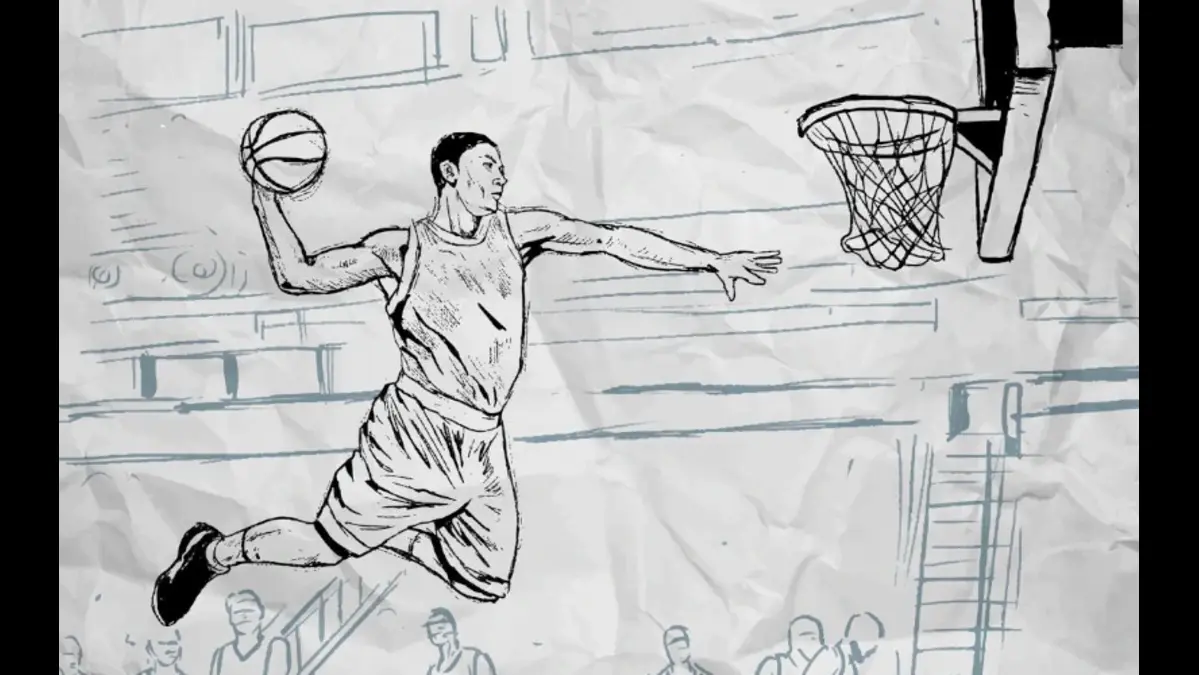Introduction to drawing basketball scenes
Are you ready to take your artistic skills to the next level? drawing:_tpnhdiv3r8= basketball If is your passion, why not combine it with your love for drawing? Capturing the essence of a game on paper can be both exciting and rewarding. Whether you’re sketching an intense one-on-one matchup or illustrating a bustling half-court scene, mastering the art of drawing basketball scenes opens up endless creative possibilities. Dive into this step-by-step guide and discover how to bring dynamic plays and vibrant emotions to life through your drawings. Let’s hit the court together!
Understanding the basics of perspective and proportions for court drawings
Understanding perspective is crucial when drawing drawing:_tpnhdiv3r8= basketball scenes. It creates depth and realism. You must visualize where the viewer stands in relation to the court.
Start with a vanishing point on your horizon line. This point dictates how objects recede into space, guiding lines for the court markings and sidelines.
Proportions matter too. Players are typically around 6-7 feet tall; their heights must remain consistent throughout your drawings. Use simple shapes to sketch out figures before adding details.
Remember that foreground objects appear larger while those in the background look smaller. Adjusting sizes will help create a dynamic feel in your artwork, bringing energy to each scene you depict.
Practice aligning these elements, as they form the backbone of effective drawing:_tpnhdiv3r8= basketball illustrations. Engage with various perspectives until it feels natural and intuitive for you.
Step-by-step guide to drawing a half-court scene
Start with a light pencil sketch. Begin by outlining the half-court line and the three-point arc. This establishes your layout.
Next, add the free-throw lane and circle. Keep proportions in mind; these elements set the stage for your scene.
Once you’ve got the court outlined, position key features like the basket and backboard. Pay attention to their placement within your perspective.
Now it’s time for players! Sketch them lightly first. Position one player dribbling towards the basket while another guards closely.
Add details gradually—shoes, facial expressions, and unique jersey numbers bring life to your characters.
Use shading techniques to create depth in both players and court markings. Add lines on jerseys or textures of shorts for realism that pops off the page.
Finish with background elements such as bleachers or a scoreboard if space allows, enhancing context without overpowering your main focus.
Adding details and textures to make the drawing come alive
Adding details and textures can transform your drawing:_tpnhdiv3r8= basketball from flat to dynamic. Think about the court surface—lightly shaded lines can create depth, making it feel more realistic.
Pay attention to the ball’s texture too. Use cross-hatching or stippling techniques to mimic its pebbled surface. This small detail adds authenticity.
When depicting players, don’t forget their jerseys. Capture movement by showing wrinkles and folds in the fabric as they dribble or shoot. This helps convey energy and action.
Shadowing is another key element. Play with light sources; shadows cast from players can enhance perspective, grounding them within the scene.
Consider incorporating features like benches or spectators in the background for added context. These elements contribute layers that pull viewers into your artwork, making them feel part of the game.
Tips and tricks for drawing players, jerseys, and other elements
When drawing drawing:_tpnhdiv3r8= basketball players, focus on their dynamic poses. Capture the energy of a jump shot or a defensive stance. Studying real-life movements can help you depict them accurately.
Pay attention to proportions. The average player is about 7-8 heads tall. Use this ratio for scaling limbs and torsos, making your drawings more realistic.
For jerseys, observe the folds and creases created by movement. Lightly sketch these details before finalizing them to add depth.
Don’t forget team logos and numbers; they give character to each player. Reference actual jerseys for accuracy but feel free to infuse your style into designs.
Background elements like hoops or bleachers enrich the scene without overwhelming it. Keep these simple yet effective, allowing players to remain the focal point of your artwork.
Creating a full-court scene with multiple players and action shots
To create a full-court scene, start by mapping out the court layout. Sketch the key features like the three-point line and free-throw area. This sets the foundation for your drawing.
Next, think about player positioning. Consider how players interact during gameplay—defenders blocking shots or teammates setting picks bring dynamic movement to your piece.
Incorporate action shots that capture energy and emotion. A player jumping for a dunk can add height while others dribble or pivot around them, creating depth in your composition.
Don’t forget to vary body angles and expressions. Different postures convey unique actions; a focused stare from a shooter contrasts beautifully with an excited gesture from a passer.
Use motion lines sparingly to enhance movement without overwhelming the scene. These subtle cues help viewers feel the excitement of drawing:_tpnhdiv3r8= basketball in every stroke you make on paper.
Conclusion: Practice makes perfect in mastering the art of court drawing
Mastering the art of drawing basketball scenes requires dedication and practice. As you hone your skills, remember that every stroke counts. Embrace the learning process and don’t rush it. Each attempt teaches you something new about perspective, proportions, and action dynamics.
Take time to explore different styles and techniques. Experiment with various elements like lighting, movement, and texture to bring your drawings to life. Engage in regular practice sessions; they will help you develop a unique approach to capturing the excitement of drawing:_tpnhdiv3r8= basketball on paper.
Seek inspiration from professional artists or famous games. Analyze their work for tips on composition and detail enhancement. Surround yourself with resources—books, online tutorials, or even community workshops—to keep pushing your boundaries.
Keep a sketchbook handy during games or while watching players in action. It’s an excellent way to capture spontaneous moments that can enhance your skills further.
With perseverance and passion for both drawing:_tpnhdiv3r8= basketball and art, you’ll find yourself improving steadily over time. Stay committed; before you know it, drawing basketball scenes will feel natural—and maybe even second nature!




